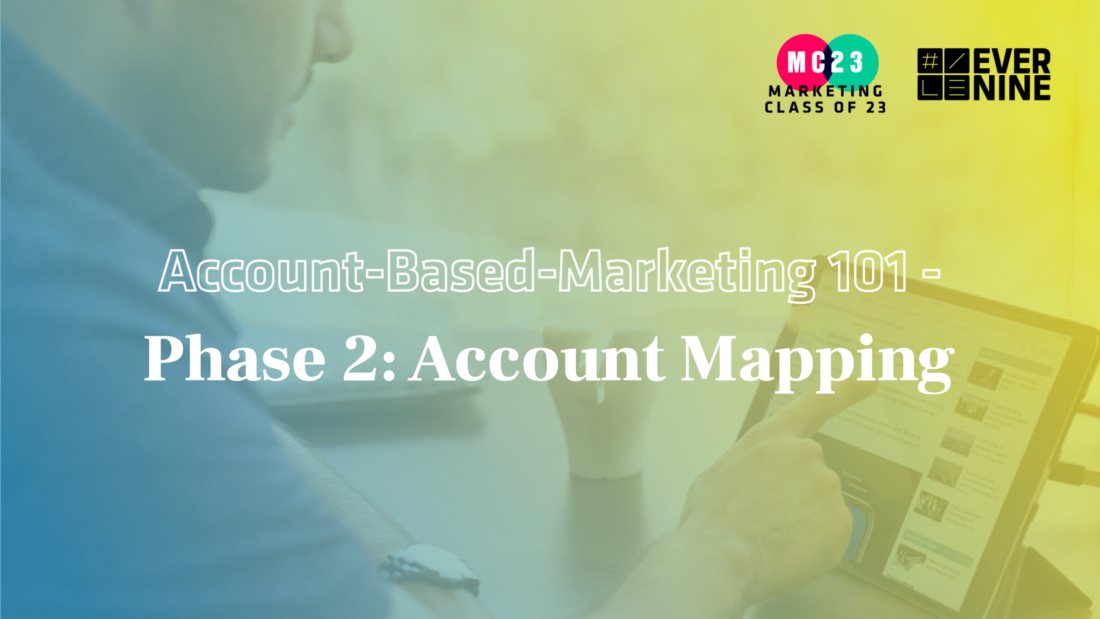
Account-Based-Marketing 101 – Phase 2: Account Mapping

by Sven Blaukat
In the first part of our series, we looked at the criteria used to create an account list. In the second part, we will now take a closer look at the companies with the aim of tailoring the content and messaging as closely as possible to the needs of the companies. This can be done, for example, by segmenting according to decision-maker and influencer groups.
Precision in an account- or person-centered approach is the prerequisite for a successful ABM strategy/campaign.
The number of companies selected can already give an indication of which approach is chosen as a starting point for account-based marketing. If the number is less than ten, it is possible to address the companies and their employees very individually (strategic ABM). If the number is less than around 100, it makes sense to work with vertical clusters or specific buyer groups, for example (ABM Light). With over 100 accounts, a programmatic approach is usually chosen - or a mixture of one-to-many and one-to-few strategies. Programmatic ABM is certainly the most frequently used entry tactic at present, which is why we at Evernine also call it the “ABM demand gen approach”, as relatively high MQL targets are often set in this case.
The following points of reference help to divide the target lists into segments (simplified representation):
ABM PROGRAMMATIC (FROM APPROX. 100 COMPANIES)
- Search for commonalities among the selected companies (e.g. similar business models)
- Grouping according to industries/verticals
- Define decision-maker group (personas/job titles)
ABM LIGHT (FROM APPROX.10-100 COMPANIES)
The industry or functional approach generally applies here
- Does our product/service fit industries better or do we solve problems of individual job functions?
- Sorting groups by industry or function/skill in the company (personas)
ABM STRATEGIC (UP TO APPROX. 10 COMPANIES)
- Basic question: What exactly does the buyer group look like?
- With whom exactly have deals already been concluded with similar company constellations?
- How was the entry point for successful deals?
- Precise definition of job functions: Who are decision-makers, who are influencers? (personas)
- Which personal company contacts already exist? Where are contacts missing or where are the white spaces? (CRM/sales check)
- Naming the job functions per account and/or naming the decision-makers (names)
Account Mapping
Once the target accounts have been divided into groups/personas/functions/contacts, the next step is to create the so-called “play” - this is where you decide which solution or product you want to approach the target accounts with. “Play” and ‘Account Mapping’ can be swapped in the order of the ABM setup described here if necessary. Colleagues from product marketing and sales are consulted to define the “play”. Creativity is also required here.
More on this in the third part of this ABM series.
If you would like to find out more about account-based marketing or need help, simply contact abm@evernine.de or find more information in our white paper.



